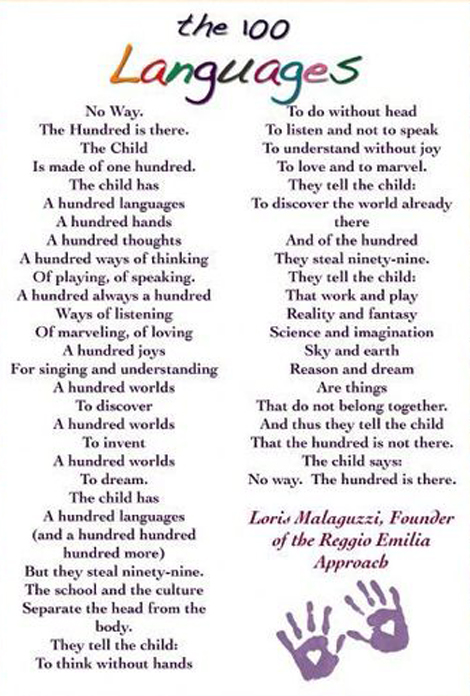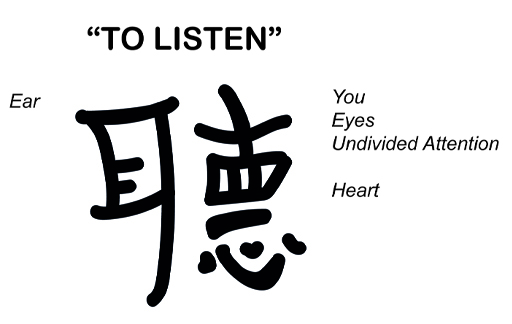4 Listening to children
Listening to children is fundamental to understanding them; however, listening does not only mean hearing the words that children say. One of the pioneers of early education in Italy, Loris Malaguzzi (1920–94), was very attuned to the fact that children have many different ways in which they communicate their thoughts and feelings. He put together the following poem to express what he perceived as the 100 languages in which children attempt to express themselves if only adults could learn to listen attentively:

At this point, you might also note that the Chinese symbol for listening is as follows:
So, the verb ‘to listen’ moves beyond simple notions of ‘hearing’. Actions include using your eyes to observe; in this case, giving the child your undivided attention while you also open your heart and your mind to what the child is communicating to you.
Activity _unit6.4.1 Activity 3 Listening to children
In the following video, practitioners talk about their involvement in a listening project in an early years setting. Watch the video then consider the questions that follow.
Practitioners in an early years setting
- What is the importance of listening to children?
- What can the process of listening involve when we go beyond simply using our ears to hear?
- How does the poem you read about the 100 languages link to aspects of listening to children that the staff in the video mention?
- How do issues in the video relate to any previous work you have done in this course?
Discussion
You may recall staff talking about how they have found themselves increasingly open to all the different ways that children express themselves, and that listening goes beyond simply hearing what the young child says. Listening is as much about close and attentive observation, waiting patiently and the imitation of physical gestures, but wherever possible with the child leading the process.
You probably took note of two important processes that you have previously considered: attachment and attunement, which were in Session 3. You will come across these processes again when you examine the role of the counsellor in Session 7. Communication with the child and being finely attuned to everything they do helps to form effective social and emotional attachments.
The key component of listening to the whole child is for the process to be child-led. By observing and listening, adults can build up a much richer picture of the child and how they experience the world in which they live. In the broadest sense, listening can help to promote good wellbeing.
In the next section, you will explore one example of a practical way that adults in educational settings can listen to children.

